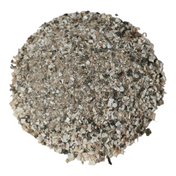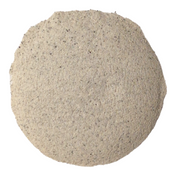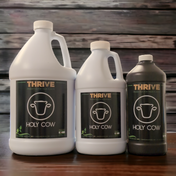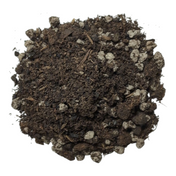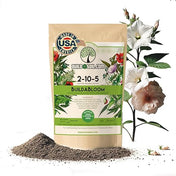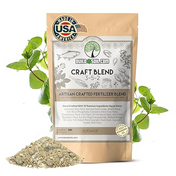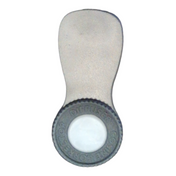Heavy Metal Testing and Best Practices for Organic Living Soil Growers
We must stick together as a community and handle these problems out in the open for the betterment of all those that are going to grow in living soil and don’t want to be forced into hydro for fear of heavy metals. When we do research and have data, the decisions become clear.
We do not believe the home grower should be as concerned with these restrictive new testing limits and we are lobbying politically for change in the testing parameters that is more realistic for organic growers. With education comes change. Instead of telling you our opinion we figured we would share all of the data with you that we have so you can make your own informed decisions.
- What are Heavy Metals
Heavy metals are chemical elements with a specific gravity at least five times that of water. In cannabis we are talking about Heavy metals such as lead, cadmium, mercury, and arsenic because they are toxic to both plants and humans, and therefore often the focus of testing.
- Difference between Organic and Inorganic Arsenic
https://www.mcgill.ca/oss/article/health/what-difference-between-organic-and-inorganic-arsenic
Atoms of arsenic can combine with atoms of other elements to form a variety of compounds. These can be divided into two categories, “inorganic” and “organic.” In this case, the term “organic” is used in its proper chemical sense, referring to molecules that have a framework of carbon atoms. In an “organic” arsenic compound, the arsenic atom is attached to a carbon that may, for example, be part of a sugar molecule such as ribose. This "organic" variety is more complicated in structure, but it is harmless. “Inorganic” arsenic compounds, on the other hand, do not contain carbon and are generally simple molecules, such as arsenic trioxide. These compounds are highly toxic.
Arsenic trioxide, meriting the name of “inheritance powder”, is the one that historically has been used as a lethal poison. Groundwater can contain inorganic arsenic in the form of arsenite or arsenate, in which arsenic is bound to oxygen atoms. Drinking such water can pose a serious health risk, as has been demonstrated in Bangladesh where the water in numerous wells has been found to contain arsenic at concentrations hundreds of times greater than 10 parts per billion - the number that has been deemed to be the maximum safe level. Ironically, theses very same wells were bored in the first place because so many people were dying from gastrointestinal diseases caused by drinking pond and river water contaminated by sewage. Epidemics of skin blemishes, lung disease, skin cancer, and liver failure have already afflicted people drinking contaminated well water. By contrast, organic arsenicals, such as arsenobetaine, the most abundant arsenic compound in seafood, are relatively non-toxic. That’s because the arsenic atoms are firmly tied up and unavailable for bonding with important biomolecules such as proteins.
The source of both organic and inorganic arsenicals are naturally occurring minerals, with arsenopyrite (FeAsS), realgar (As4S4) and orpiment (As2S3) being examples. As these erode, they react with moisture and oxygen to form arsenites and arsenates that are water soluble and consequently end up in both surface and groundwater. In surface waters, these can be absorbed by algae that then convert them to arsenosugars, arsinolipids and arsenobetaine.
Fish and other forms of marine life feed on these algae and concentrate the arsenic compounds. However, due to the relatively low toxicity or organic arsenicals, there is not much worry about arsenic in seafood. Rice, on the other hand, presents a different story. It grows in flooded paddies where the water can harbour inorganic arsenicals that are readily absorbed into the growing plant and are passed into the grain. The amount of arsenic that ends up in rice depends on the local geology. California rice tends to be very low in arsenic.
Obviously, when determining arsenic content of foods or beverages it is important to distinguish between the forms of arsenic. "Total arsenic count" can be misleading, as was demonstrated by the concern over apple juice, when results revealed on the Dr. Oz Show seemed to indicate unacceptable high levels of arsenic, panicking young moms. A proper analysis by the Food and Drug Administration, however, found that the concentration of inorganic arsenic, the one that matters, was within acceptable levels. Regulations for arsenic in apple juice are now in effect and have to be less than 10 ppb, the same as for drinking water.
At one time, the toxicity of inorganic arsenic compounds made them useful in the battle against insects and rodents. For example, copper acetoarsenite, first made around 1814 by reacting arsenic trioxide with copper acetate, found immediate application as a rodenticide. It was used to kill rats in the sewers of Paris, hence its common name of “Paris Green.” During the Second World War it was sprayed from airplanes to kill mosquitoes in an attempt to control malaria in Italy. Due to toxicity concerns for people, arsenic insecticides and rodenticides have now been relegated to history books .
What are standards currently for Compost?


BuildASoil Light results:

BuildASoil 3.0 Recipe Results

- What are standards for Cannabis in all states?
Colorado New Laws:


Michigan Growers?!! I would be speaking to my attorney about the Michigan laws and verifying if this language is accurate. The law states "inorganic Arsenic" but you are all being held accountable to "Total Arsenic" and that is damaging.
- Home Growers Concern Level?
For home growers, this means little will change. Be aware of the organic inputs that have the highest amounts of heavy metals and limit them but remember... the native soil outside has more than your potting soil so don't freak out to much. The new proposed limits are extremely low and will most likely be changed via politics. That being said, just because kelp has Arsenic doesn’t mean we shouldn’t use it. It just means that commercial grows will want to avoid it because of unfair laws. Remember, Organic vs. Inorganic Arsenic vs amounts used in the grow.
-
Commercial Growers Best Practices to Avoid Heavy Metal Failure
- No More Mulching leaves into the mulch layer. Leaves accumulate the arsenic not the resin glands.
- No Kelp Teas or Topdressing
-
Seaweeds can contain far higher concentrations of arsenic than crop plants: up to 100 mg/kg (Taylor et al, this issue). In most cases the arsenic is present as arsenosugars, which are of low toxicity to humans (Taylor et al, this issue). However, as in the case of poultry litter, these compounds degrade (ultimately) to inorganic arsenic after land application94. Although seaweeds are a ‘niche’ soil amendment, their use agriculture is increasing and has been adopted by many organic farms as a soil fertilizer as well as a feed additive in organic dairy farming95. https://www.ncbi.nlm.nih.gov/pmc/articles/PMC5303541/#R10
- Push Aloe or Salicylic acid through flower as this reduces arsenic uptake and early correlation shows lower numbers on grows using aloe all the way through. We are testing currently.
- Push Silica as Silica can help reduce uptake.
- Rice hulls are high silica and can also help (Check heavy metal tests)
- Rice plants take up high concentrations of silica, constituting up to 10% of dry matter in the straw and husk of the plant198. As mentioned earlier (Section 6) the silicon membrane transporter (Lsi1) is the main route of arsenite entry in to rice root cells, and provision of silicon causes competitive inhibition of arsenite uptake. Increasing silicon availability in the soil also reduces the expression of the Lsi1 transporter in the plant, which further decreases the potential for arsenic uptake. Fertilization of rice paddy soils with silicon is a potential mitigation strategy for preventing or reducing arsenic uptake by rice through competitive inhibition of arsenite uptake199. The use of synthetic silicon fertilizers, such as calcium silicate or silica gel is prohibitively expensive for smallholder farmers in developing countries, however reusing the silicon-rich parts of the rice plant that remain after harvesting and grain processing may provide a sustainable solution that also addresses the ongoing issue of silicon depletion of the soil198. Soil incorporation of fresh rice husks, or the ash that remains after burning the husk and straw for energy (which is a common practice for smallholder farmers), can provide silicon without increasing methane production and decreases either total or inorganic arsenic in rice grain200
-
Iron and Silica have both been shown to help. (Rock Dust Like Basalt?)
Soil amendment involves incorporating substances into the plow layer that either add missing nutrients, reduce the bioavailability of existing potentially toxic substances (to prevent crop uptake), or both. Soil amendments that have shown potential in reducing arsenic uptake by plants include iron-, and silica-based additives. The use of iron-based amendments increases in the concentration of free iron oxide in the soil, retarding the release of arsenite from the solid phase into soil solution, (mentioned in Section 4.1 and discussed in Section 5), whereas silica fertilization inhibits arsenic uptake by competitive inhibition at the plant root surface while adding an essential nutrient.
- Use Malibu Compost (See test results) as it’s highly controlled production and tests VERY low for heavy metals.
- Continue to use Rootwise Mycrobe Complete or mycorrhizae even through flower as it helps reduce uptake.
- Limit heavy use of Water Soluble Fertilizers with any heavy metals later in flower.
- Consider using planting with Chinese Ladder brake fern. "The discovery of the Chinese brake fern (Pteris vittataL) and related species to hyperaccumulate arsenic in their fronds has led to the development of environmentally-friendly and cost-effective phytoremediation technology for remediation of arsenic contaminated sites..."While many arsenic resistant plant variants resist arsenic by reducing its uptake, vittataresists arsenic by hyperaccumulating arsenic in its tissues...P. vittata has excellent abilities to take up and transport arsenic into its fronds and concentrate it in that tissue...Because of the structural similarity between phosphate and As(V)... As(V) is taken up by P. vittata via the phosphate transporters...As [arsenic] is transported as dimethylarsenic acid to the shoot. It may be stored as an arsenic-tris-thiolate complex." (Rathinasabapathi et al. 2006:306)
- Variables in Heavy Metal uptake we have seen so far.
Leaves take up more and the oil has the least amount. Certain Genetics can take up more or less. Overwatering can lead to increased uptake of arsenic similar to rice. Using blumats might be cause for concern if calibrated on the higher end of moisture. This will keep things from peak saturation and might limit uptake, again this is speculation and we will share more as we learn more.
7. Heavy Metal Reports and Numbers So Far


Crusty = Crustacean Meal
Blue Ridge = Blue Ridge Basalt Microfines
8. Normal numbers for native soil around the world?
The concentration of arsenic in soil varies widely, generally ranging from about 1 to 40 parts of arsenic to a million parts of soil (ppm) with an average level of 3–4 ppm.
Since arsenic is found naturally in the environment, you will be exposed to some arsenic by eating food, drinking water, or breathing air. Children may also be exposed to arsenic by eating soil. Analytical methods used by scientists to determine the levels of arsenic in the environment generally do not determine the specific form of arsenic present. Therefore, we do not always know the form of arsenic a person may be exposed to. Similarly, we often do not know what forms of arsenic are present at hazardous waste sites. Some forms of arsenic may be so tightly attached to particles or embedded in minerals that they are not taken up by plants and animals.
The concentration of arsenic in soil varies widely, generally ranging from about 1 to 40 parts of arsenic to a million parts of soil (ppm) with an average level of 3–4 ppm. However, soils in the vicinity of arsenic-rich geological deposits, some mining and smelting sites, or agricultural areas where arsenic pesticides had been applied in the past may contain much higher levels of arsenic. The concentration of arsenic in natural surface and groundwater is generally about 1 part in a billion parts of water (1 ppb), but may exceed 1,000 ppb in contaminated areas or where arsenic levels in soil are high. Groundwater is far more likely to contain high levels of arsenic than surface water. Surveys of U.S. drinking water indicate that about 80% of water supplies have less than 2 ppb of arsenic, but 2% of supplies exceed 20 ppb of arsenic. Levels of arsenic in food range from about 20 to 140 ppb. However, levels of inorganic arsenic, the form of most concern, are far lower. Levels of arsenic in the air generally range from less than 1 to about 2,000 nanograms (1 nanogram equals a billionth of a gram) of arsenic per cubic meter of air (less than 1–2,000 ng/m3), depending on location, weather conditions, and the level of industrial activity in the area. However, urban areas generally have mean arsenic levels in air ranging from 20 to 30 ng/m3.
You normally take in small amounts of arsenic in the air you breathe, the water you drink, and the food you eat. Of these, food is usually the largest source of arsenic. The predominant dietary source of arsenic is seafood, followed by rice/rice cereal, mushrooms, and poultry. While seafood contains the greatest amounts of arsenic, for fish and shellfish, this is mostly in an organic form of arsenic called arsenobetaine that is much less harmful. Some seaweeds may contain arsenic in inorganic forms that may be more harmful. Children are likely to eat small amounts of dust or soil each day, so this is another way they may be exposed to arsenic. The total amount of arsenic you take in from these sources is generally about 50 micrograms (1 microgram equals one-millionth of a gram) each day. The level of inorganic arsenic (the form of most concern) you take in from these sources is generally about 3.5 microgram/day. Children may be exposed to small amounts of arsenic from hand-to-mouth activities from playing on play structures or decks constructed out of CCA-treated wood. The potential exposure that children may receive from playing in play structures constructed from CCA-treated wood is generally smaller than that they would receive from food and water.
In addition to the normal levels of arsenic in air, water, soil, and food, you could be exposed to higher levels in several ways, such as the following:
- Some areas of the United States contain unusually high natural levels of arsenic in rock, and this can lead to unusually high levels of arsenic in soil or water. If you live in an area like this, you could take in elevated amounts of arsenic in drinking water. Children may be taking in higher amounts of arsenic because of hand-to-mouth contact or eating soil in areas with higher than usual arsenic concentrations.
- Some hazardous waste sites contain large quantities of arsenic. If the material is not properly disposed of, it can get into surrounding water, air, or soil. If you live near such a site, you could be exposed to elevated levels of arsenic from these media.
- If you work in an occupation that involves arsenic production or use (for example, copper or lead smelting, wood treating, or pesticide application), you could be exposed to elevated levels of arsenic during your work.
- If you saw or sand arsenic-treated wood, you could inhale some of the sawdust into your nose or throat. Similarly, if you burn arsenic-treated wood, you could inhale arsenic in the smoke.
- If you live in a former agricultural area where arsenic was used on crops, the soil could contain high levels of arsenic.
- In the past, several kinds of products used in the home (rat poison, ant poison, weed killer, some types of medicines) had arsenic in them. However, most of these uses of arsenic have ended, so you are not likely to be exposed from home products any longer.
Links:
Understanding arsenic dynamics in agronomic systems to predict and prevent uptake by crop plants
https://www.ncbi.nlm.nih.gov/pmc/articles/PMC5303541/#R10
Compost Quality Standards and Guidelines:
http://compost.css.cornell.edu/Brinton.pdf


